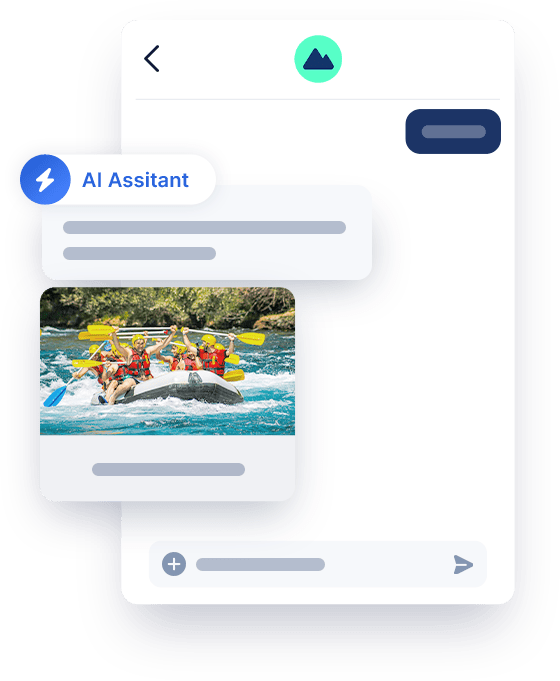How to Create Mobile-First Customer Service
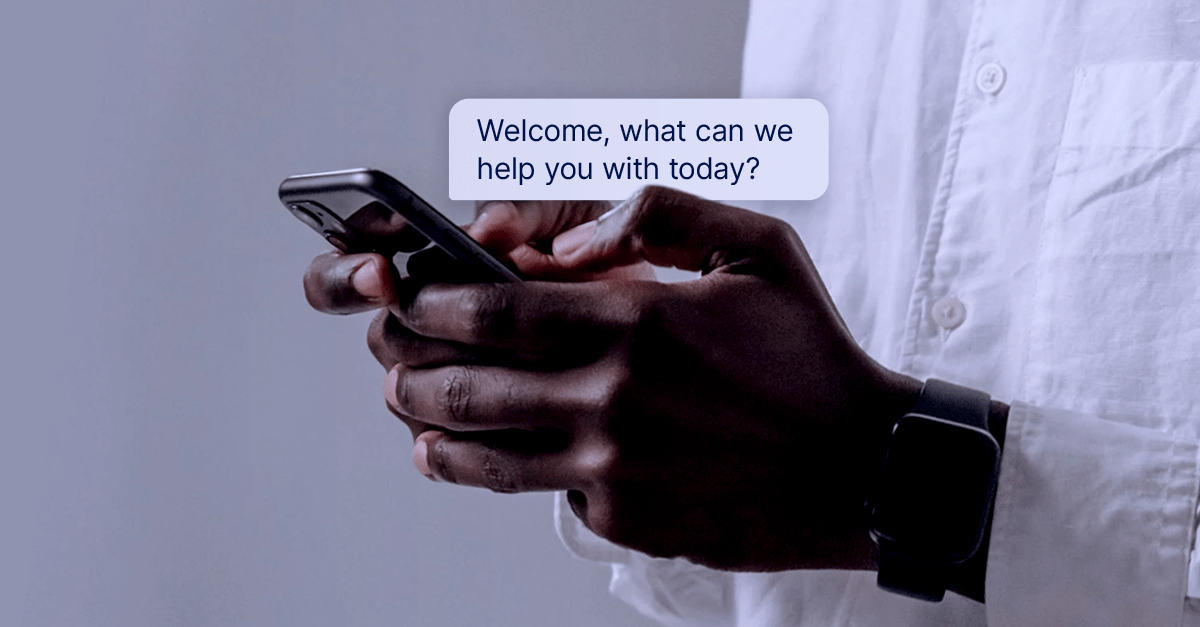
Chatting with companies over the phone, even your favorite ones, isn’t a fun experience. It’s a necessity. It’s like going to the dentist—something you don’t look forward to but have to do nonetheless.
In today’s hectic, multi-tasking world, people don’t have time for phone calls. Their desire to make phone calls is inversely proportional to their age—the younger you are, the closer you get to zero. Voice menus, long hold times, bad music, incessant “Your call is important to us” recordings… It’s no one’s idea of a good time.
Meanwhile, email feels like a black hole.
Waiting and satisfaction are mutually exclusive. Having to wait for an emailed response can kill customer satisfaction. And if the issue isn’t something that can’t be answered in a simple response, the delay just gets worse as emails fly back and forth.
Despite all the effort spent by companies to provide good customer experiences, the communication channels they’ve made available require the customer to interact in ways that are convenient to only the company.
How much are we really on our phones?
A lot. On average, Americans check their phones 344 times per day—once every four minutes, according to Reviews.org.
With how much people are on their phones, you wouldn’t think a phone call would be that disruptive. (You’re already on your phone, right?) But phone calls require you to stop what you’re doing—even if what you’re doing is scrolling TikTok—and give your full attention to the person on the other end of the line.
Your customers don’t want to sacrifice their time like that—especially to do something they’ve already decided is a hassle. Instead, they want an easy way to communicate that doesn’t disrupt their day.
So it only makes sense that contact centers reimagine their customer interactions with a mobile-first focus in mind.
What does that look like? Keep reading to find out.
Optimize your website for mobile.
By now, there’s no excuse for websites that aren’t mobile-friendly. Google will penalize you, and customers won’t give you the time of day.
Besides, mobile phones are the top platform used for online shopping at 49%, followed by PCs at 43%, and tablets at 8%, according to BrizFeel. Even non-retail sites need to account for the public’s increasing reliance on mobile.
Many brands are designing mobile-first instead of mobile-ready websites, which means they expect their primary customer traffic to come directly from phones. Whichever you decide, remember that many of your customers will be searching for and attempting to connect with your customer service channels using their smartphones. That means giving them multiple ways to connect that aren’t just email and voice.
Where should you start? With the low-hanging fruit.
1. Start with text messaging.
People around the world connect through text messaging—whether talking with loved ones, business acquaintances, or friends. (Sixty-four percent of people even send texts from the toilet.) It only makes sense that they extend those communications with your brand.
What makes messaging so popular for communication with friends also makes it the preferred medium for engaging with brands:
- Frictionless: Messaging is asynchronous, which means customers can multi-tasking and don’t have to stop what they’re doing.
- Immediate: Customers get assistance in their time of need.
- Personal: One-to-one dialogue creates a strong customer relationship.
- Easy: Consumers are already comfortable using messaging apps.
- Multimedia: Everyone already knows how to send a picture via messaging (a picture is worth 1000 words in a support interaction!).
There are several ways you can use messaging for customer service:
Reach everyone with SMS text messaging.
SMS text messaging has a nearly 100% read rate—much higher than email (in any industry). SMS texting is texting in its simplest form. Your customers can connect with you from anywhere with a cellphone connection, and they don’t have to worry about service interruptions and unreliable Wi-Fi.
Using text messaging for customer service benefits both your customers and your support team. Customers are able to stop and start the conversation at their own convenience (instead of being tied to a phone call), and your team can manage multiple conversations at once.
2. Enhance customer service interactions with rich messaging.
Rich messaging takes your texts to the next level. With Quiq, your messages aren’t limited to plain-text capabilities. Rich messaging enables you to:
- Process secure transactions
- Schedule appointments with a tap of a button
- Send reminders, confirmations, and notices
- Increase engagement with compelling content
That means you don’t have to direct customers to the website and potentially lose them along the way. You can take care of transactions using conversational commerce, schedule appointments, and even share video walkthroughs. Everything is in one place for easy, contextual communication.
3. Keep customers engaged with outbound messaging.
Customer service isn’t just about reacting to needs—it’s about anticipating them. Outbound text messaging is one of the most effective ways to provide technical support, send shipping notifications, and create sales alerts.
Outbound messaging also emphasizes two-way communication with your customers. Instead of talking to them through advertisements and mass emails, you have engaging one-on-one conversations. This gives you a chance to tailor the customer service experience to individual customers.
Direct your web chat feature to mobile-friendly messaging.
Give customers a seamless customer service interaction by giving them the option to text your brand with a simple click of a button.
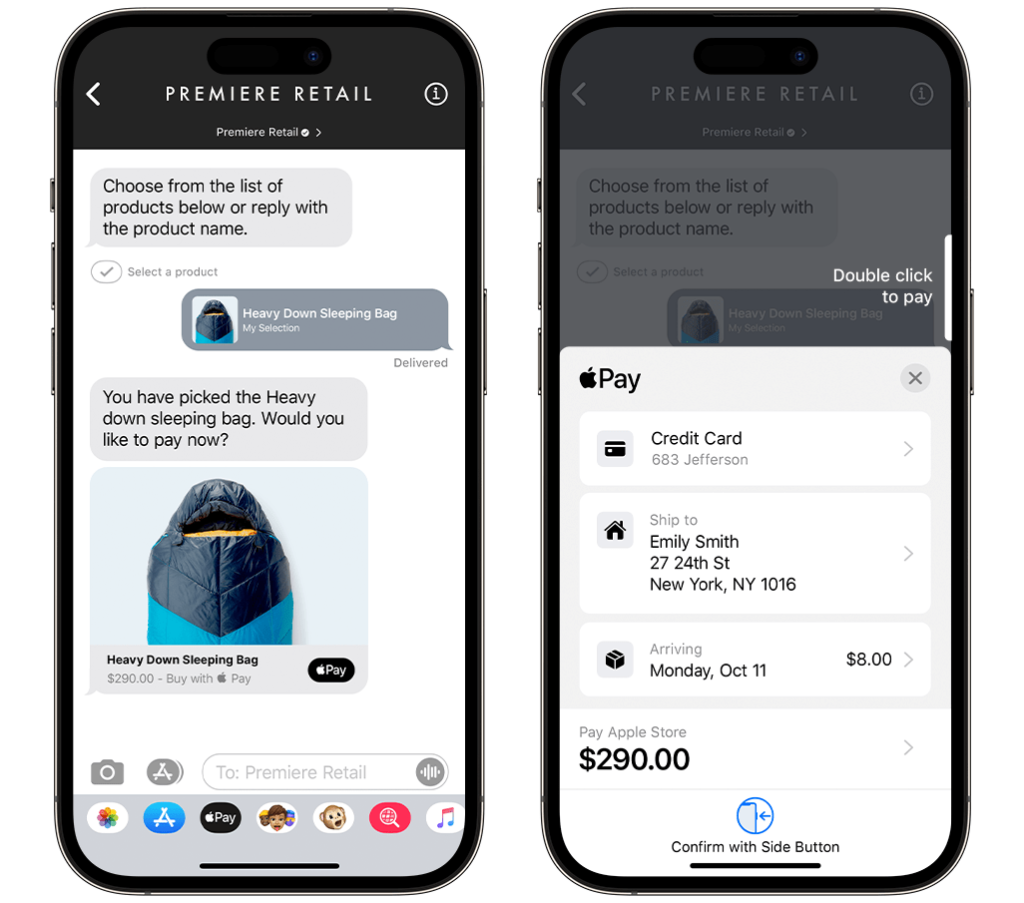
To create an even better brand experience, customers with Apple phones can chat with your agents right from their native messaging app. Using Apple Messages for Business, customers will see your logo and brand colors and get all the benefits of rich messaging. That includes:
- Apple pay
- Schedule appointments
- Present choices with images
- Verify identity
- Link directly to an app
Quiq’s conversational platform makes integration with your CRM seamless, so you can add Apple Messages for Business without increasing the operational burden on your team.
Your customers can even text you directly from Google search. When they click on your phone number, there’s an option to send a text. It helps your brand follow your customers wherever they interact with you.
Embrace other mobile-friendly messaging channels.
While text messaging is a valuable communication method for customer service, there are many other mobile channels that offer similar benefits.
Social media messaging
Meet your customers where they are, including social media channels. You can leverage Quiq’s platform to connect with customers using Facebook Messenger, Instagram, and Twitter Direct Messages all from within one interface.
WhatsApp has over 2 billion users worldwide, so it’s hard for businesses to ignore. It’s a great way to connect with international customers, and using Quiq to do it means you don’t have to worry about learning an entirely new platform.
Google Business Messaging
Google Business Messaging is ideal for connecting with customers who are using their smartphones. Customers can hit “Message” directly in Google Search or Maps to connect with your customer service instantly—all from within a branded experience.
In-app messaging
If you have a mobile app, complete the experience by offering in-app messaging. Users can access your customer service team without having to leave the app, creating a seamless and friction-free experience.
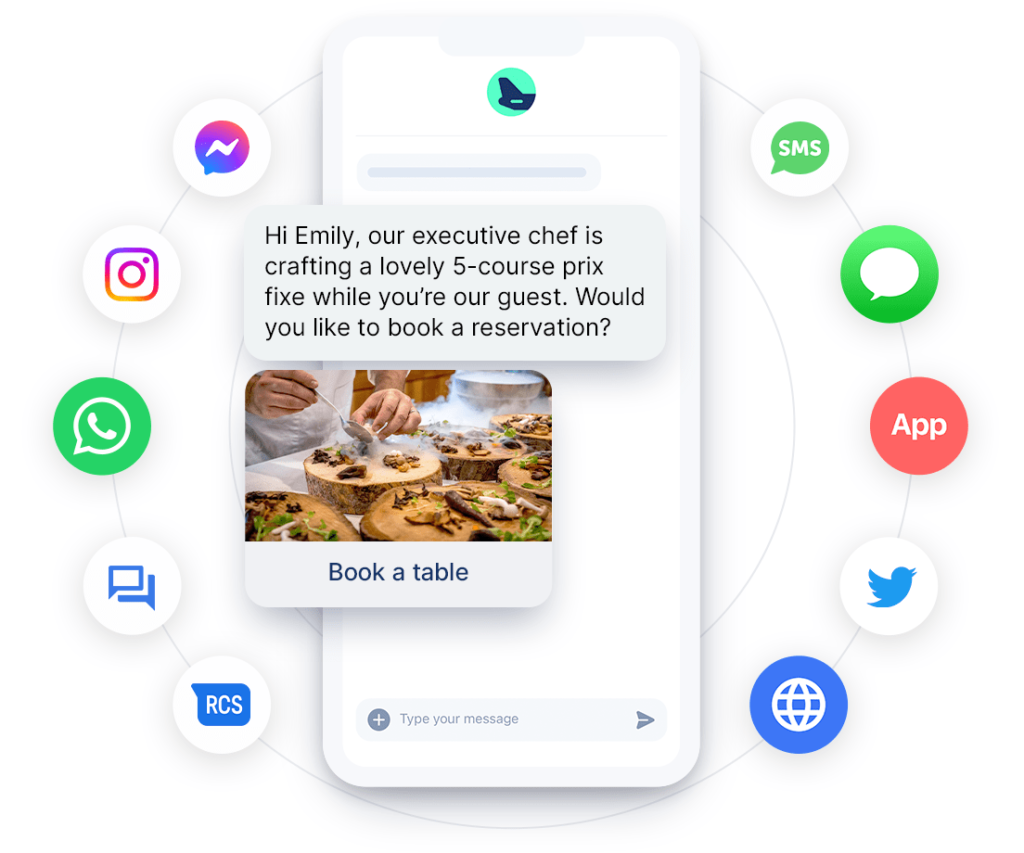
Mobile customer service benefits businesses too.
While we spent most of our time focusing on customer benefits, there are many benefits to your bottom line, too. In addition to better customer engagement, messaging also offers your company a number of additional advantages:
1. Lower staff costs.
Customers know that messaging responses don’t always come immediately. By allowing agents more time to respond to customers that have a lower level of engagement, Quiq’s Conversational AI Platform enables the company to serve more customers with fewer agents and helps smooth out the staffing requirements during peak periods.
As compared to email, messaging can also be more efficient since a conversation provides start-to-finish problem resolution. With email, if additional information is needed, it could take multiple back-and-forth emails. Then you’re looking at involving multiple agents who each need to come up to speed on the problem. It all adds up to a lot more time.
2. Better and faster understanding.
A significant part of many customer service interactions is understanding the problem at hand. Since customers are already very familiar with sending images and videos, customer interaction on messaging is inherently multimedia.
Customers can send pictures of what they are seeing (e.g. the broken strap on the handbag or a video showing how the part doesn’t fit), and agents can respond with images and video as well. This leads to faster time to resolution, which improves customer satisfaction and lowers staffing costs.
How to supercharge your mobile messaging with Quiq’s Conversational AI Platform.
The power of Quiq lies in supporting your current systems and operations and making them better. This includes integrating with your CRM systems, like Oracle, Salesforce, and Zendesk—but also helping your customer service agents shine.
There’s no room for slow, cumbersome, and unintuitive software. Quiq is designed to make your agents’ lives easier. For example:
- A simple and intuitive UI makes it easy to handle a large number of asynchronous conversations simultaneously.
- Text Snippets with simple keyboard shortcuts reduce the time and effort needed to craft great customer responses.
- Natural language processing (NLP) helps predict customer intent, so agents can prioritize conversations accordingly.
- Response Time helps agents know which conversation needs attention and guides agents to respond within the customer’s expectations. Because of the asynchronous nature of messaging, different customers have different levels of engagement. Response Time helps agents prioritize customers who are highly engaged while allowing longer times for other customers that are less engaged.
- Collaboration is built right in. Agents can invite others to silently join a conversation in the background, and when necessary, the agent can easily hand off the conversation to a collaborator.
- Emojis allow agents to express emotion, sympathize with the customer’s frustrations, and celebrate successes.
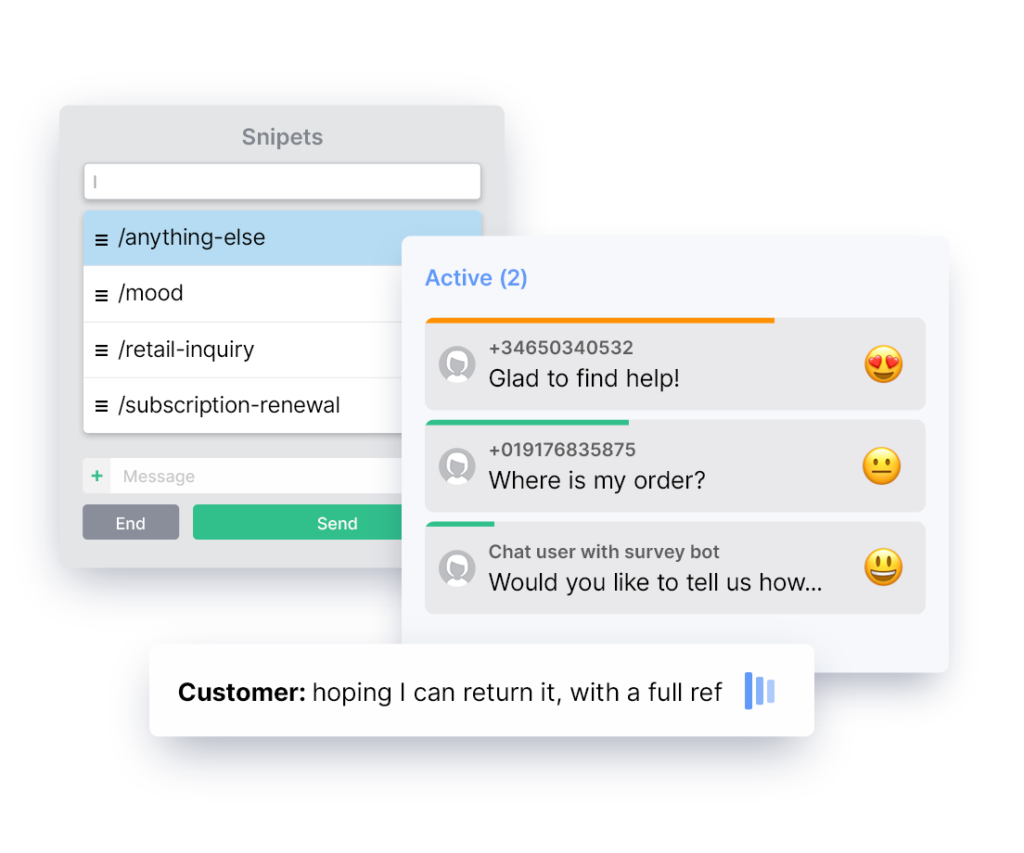
All of these features help your customer service agents engage with customers the way customers prefer—using their mobile devices.

